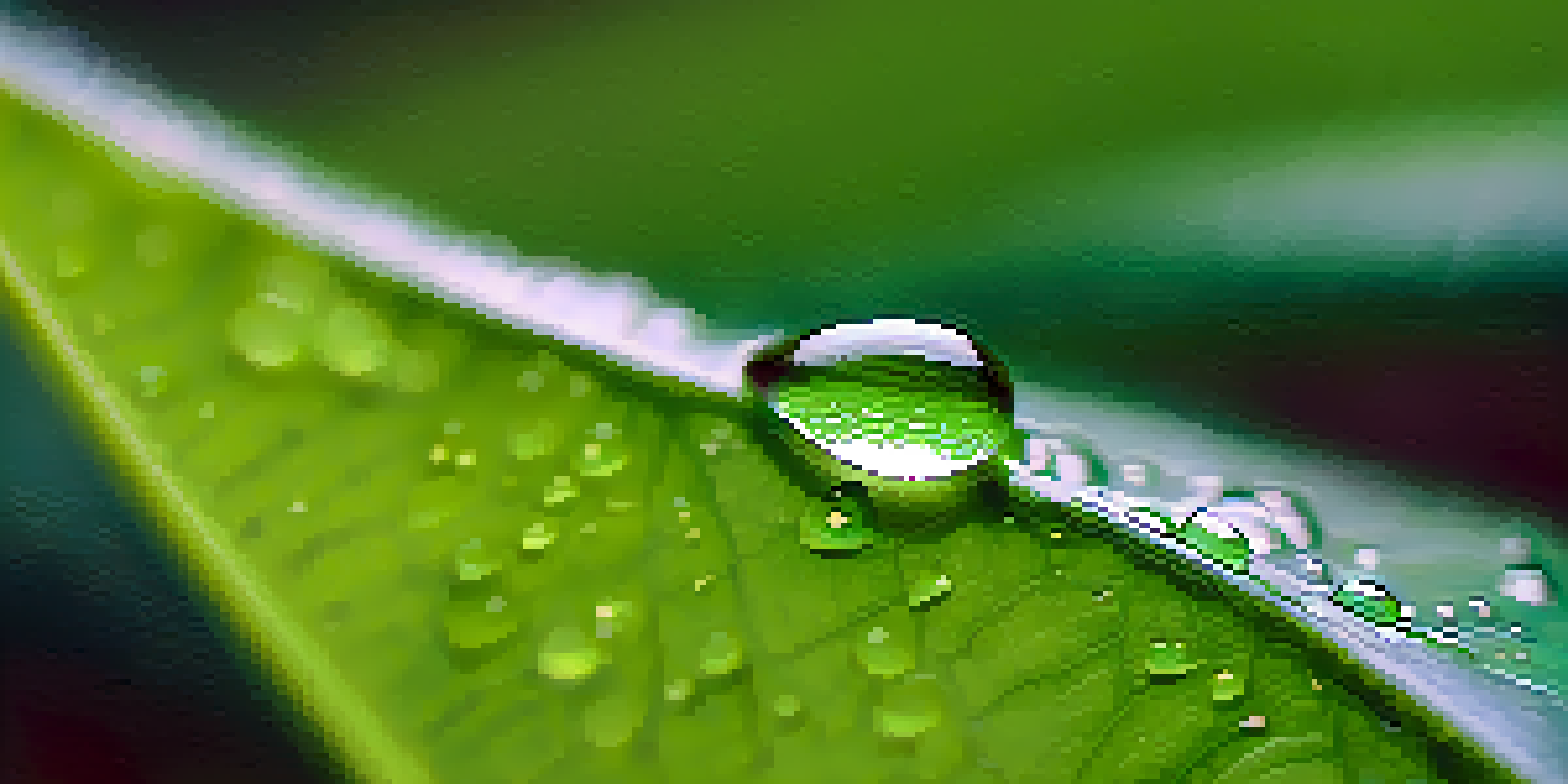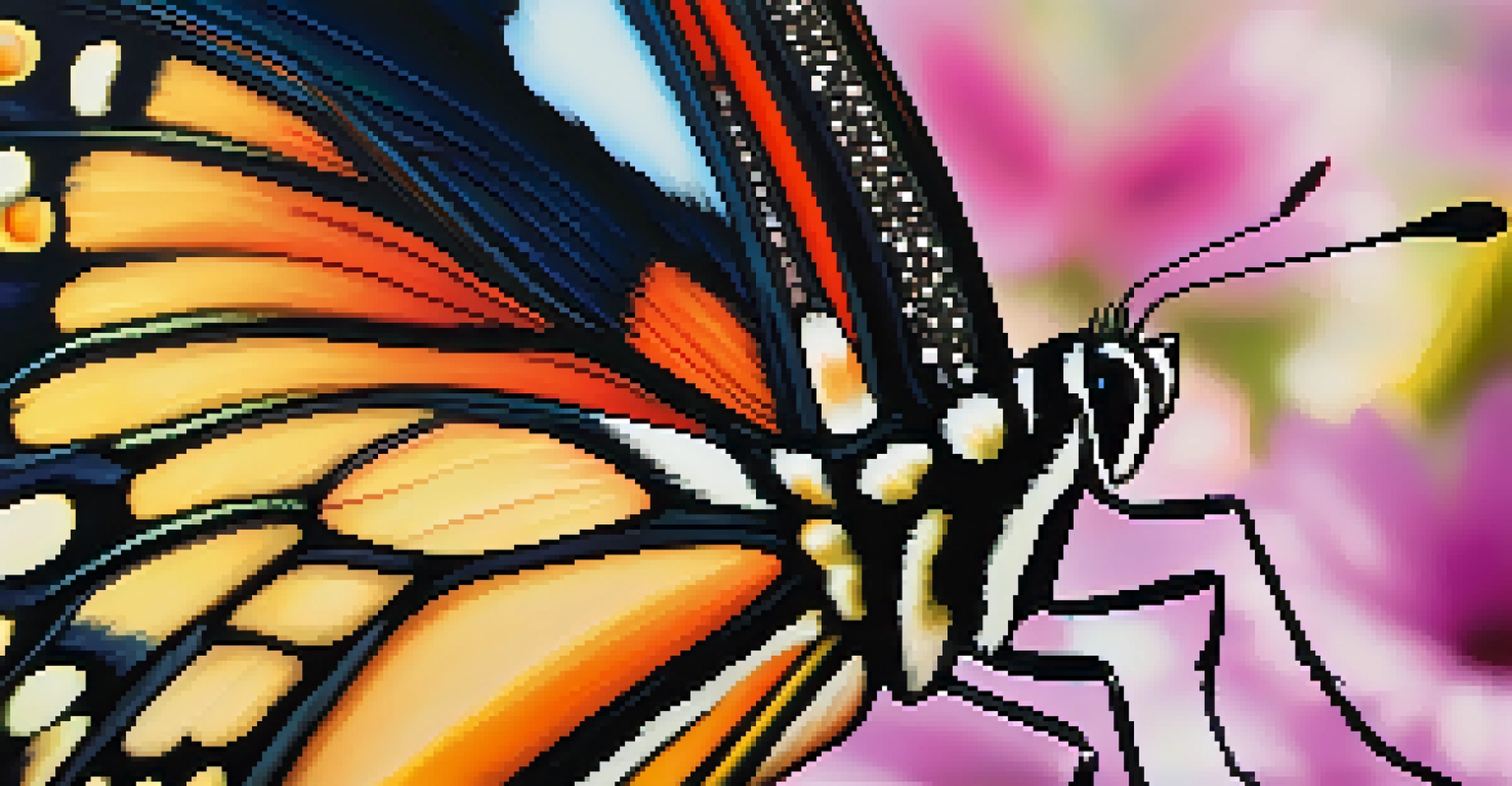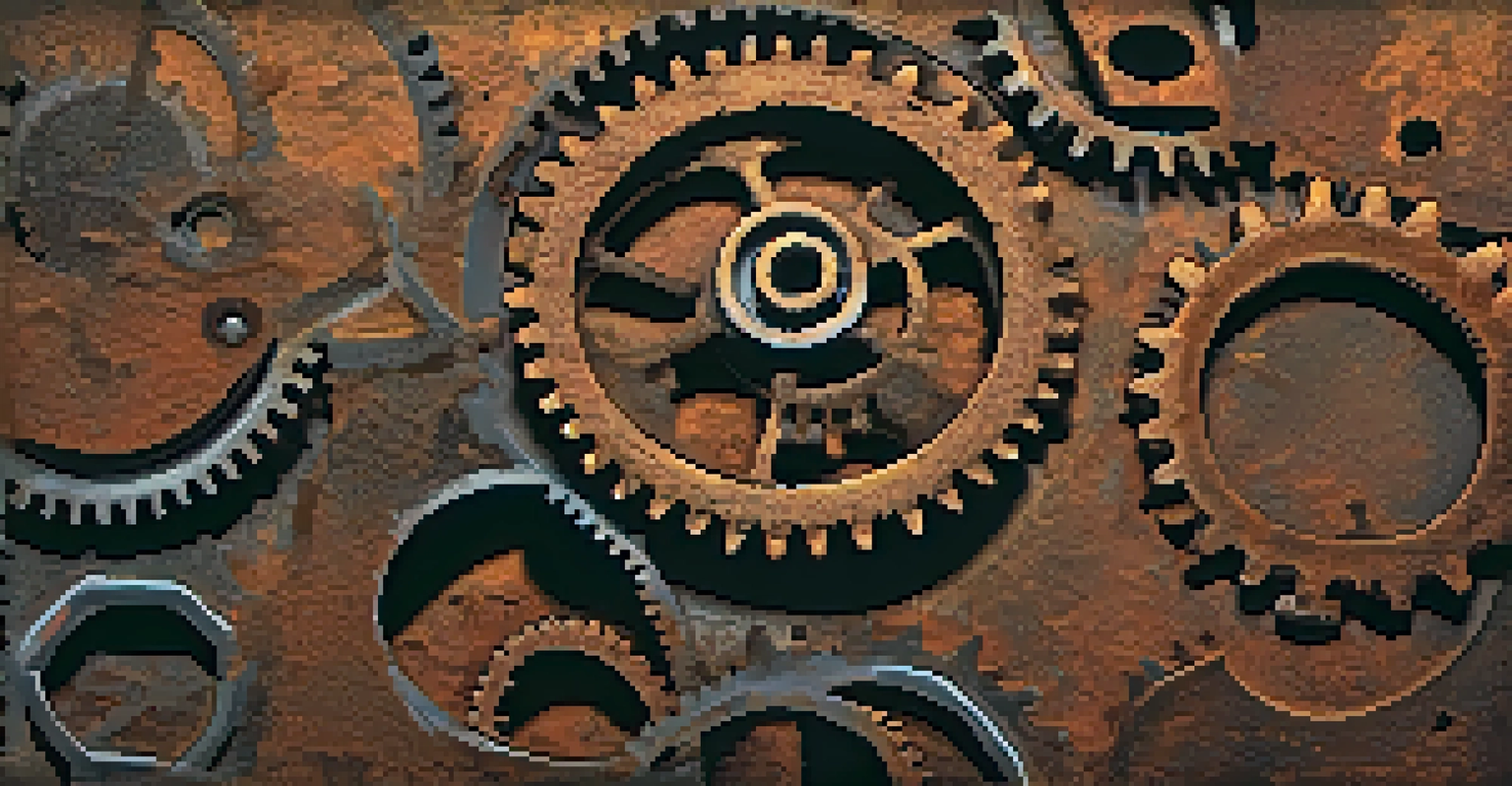Exploring Macro Photography: Capturing the Beauty of Small Things

What is Macro Photography and Why It Matters
Macro photography is the art of taking close-up pictures of small subjects, revealing details often missed by the naked eye. This fascinating genre allows photographers to explore the intricate beauty found in everyday objects, insects, and plants. By focusing on these tiny worlds, macro photography opens up a new perspective, transforming the ordinary into the extraordinary.
In every walk with nature one receives far more than he seeks.
Imagine observing a dewdrop perched delicately on a leaf or the intricate patterns found on a butterfly's wing. These details can evoke a sense of wonder and appreciation for nature's artistry. Macro photography not only highlights beauty but also encourages us to slow down and observe our surroundings more closely.
Whether you're a seasoned photographer or a curious beginner, macro photography invites you to experiment and unleash your creativity. As you delve into this genre, you'll discover that every small subject has its own story waiting to be told through your lens.
Essential Gear for Macro Photography Success
To embark on your macro photography journey, having the right gear is essential. A dedicated macro lens is often the best investment, as it allows you to capture sharp details from a very close distance. If you're on a budget, consider extension tubes or close-up filters that can be attached to your existing lens for a more affordable option.

In addition to your lens, a sturdy tripod can greatly enhance your shooting experience. Since macro photography often requires longer exposure times, a tripod helps prevent camera shake, ensuring crisp images. Don't forget to bring a remote shutter release or use your camera's timer function to further minimize movement.
Explore the Art of Macro Photography
Macro photography reveals the intricate beauty of small subjects, encouraging a deeper appreciation for the details in nature.
Lastly, consider using a ring light or a small flash to illuminate your subjects. Natural light can be unpredictable, especially when shooting in shaded areas or during cloudy days. Having supplemental lighting will allow you to highlight details and textures, bringing your macro images to life.
Choosing the Right Subjects for Macro Photography
When it comes to macro photography, the world is your oyster! From flowers and insects to everyday objects around your home, there are countless subjects to explore. Start by looking at your garden or a nearby park; you might be surprised by the intricate details of a simple flower or a busy bee.
Photography is the story I fail to put into words.
Don't overlook household items either! Everyday objects like kitchen utensils or textured fabrics can make for interesting macro subjects. The key is to find something that piques your interest and challenges your creativity. Experimenting with different subjects will help you develop your unique style.
Remember, the goal is to find beauty in the small things. Take your time to observe and appreciate even the tiniest details, as they can lead to stunning compositions that tell a story. As you explore various subjects, you'll discover new ways to see the world through your lens.
Mastering Composition in Macro Photography
Composition plays a crucial role in macro photography, as it helps draw attention to your subject while creating visually appealing images. The rule of thirds is a great starting point, guiding you to place your subject off-center for a more dynamic shot. By dividing your frame into thirds, both horizontally and vertically, you can position key elements along these lines or at their intersections.
Leading lines can also enhance your composition, guiding the viewer's eye toward your subject. Look for natural lines in your environment, such as the curve of a petal or the edge of a leaf. These elements can help create a sense of depth and make your macro photography more engaging.
Essential Gear for Beginners
Investing in a dedicated macro lens and using tools like tripods and lighting can enhance your macro photography experience.
Finally, don't be afraid to experiment with different angles and perspectives. Shooting from above, below, or at eye level can completely change the mood of your image. Embrace your creativity and take your time to find the best composition that showcases the beauty of your subject.
Lighting Techniques for Stunning Macro Shots
Lighting can make or break your macro photography, so understanding how to use it effectively is essential. Natural light is often the best option, especially during the golden hour, which occurs shortly after sunrise or before sunset. The soft, warm tones during these times can enhance your images, highlighting the textures and colors of your subjects.
However, harsh midday sun can create unwanted shadows and overexposed highlights. In such cases, consider using diffusers or reflectors to soften the light. A simple piece of white fabric or a professional diffuser can help create a more even lighting effect, allowing you to capture the details without harsh contrasts.
Artificial lighting can also be beneficial, especially when shooting indoors or in low-light conditions. Using a ring light or off-camera flash can help illuminate your subject while maintaining control over shadows. Experimenting with different lighting setups will allow you to discover what works best for your style and subjects.
Editing Your Macro Photos for Maximum Impact
Post-processing is an important step in macro photography that can elevate your images to a whole new level. Software like Adobe Lightroom or Photoshop allows you to enhance colors, adjust exposure, and sharpen details, making your images pop. A little editing can go a long way in creating a polished final product.
Start by adjusting the brightness and contrast to ensure your subject stands out. Increasing saturation can make colors more vibrant, but be careful not to overdo it, as this can lead to unnatural-looking images. Fine-tuning clarity and sharpness will help emphasize the intricate details that make macro photography so captivating.
Sharing Your Macro Masterpieces
Leveraging social media and photography communities can help you showcase your macro work and connect with fellow enthusiasts.
Finally, consider cropping your image to improve composition and focus on your subject. Removing distractions from the background can help draw attention to the beauty of your small subject. With a little patience and practice, you'll be amazed at how editing can transform your macro photographs.
Sharing and Showcasing Your Macro Photography
Once you've captured stunning macro images, it's time to share them with the world! Social media platforms like Instagram and Pinterest are perfect for showcasing your work, allowing you to connect with fellow photographers and nature enthusiasts. Use relevant hashtags, such as #Macrophotography or #CloseUpPhotography, to increase your visibility and attract a broader audience.
Consider joining photography groups or forums to share your images and receive constructive feedback. Engaging with other photographers can help you grow your skills and inspire new ideas. Don't hesitate to participate in local exhibitions or contests, as these opportunities can provide valuable exposure for your work.

Finally, think about creating a personal website or blog to showcase your macro photography portfolio. This platform can serve as a space to share your journey, tips, and experiences, while also attracting potential clients or collaborators. The more you share your passion, the more you'll inspire others to appreciate the beauty of the small things in life.